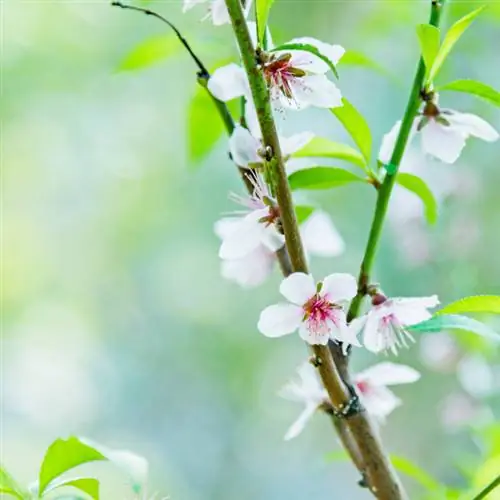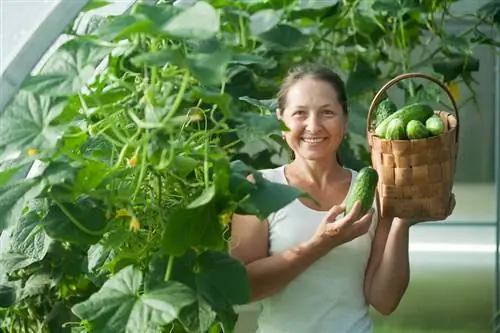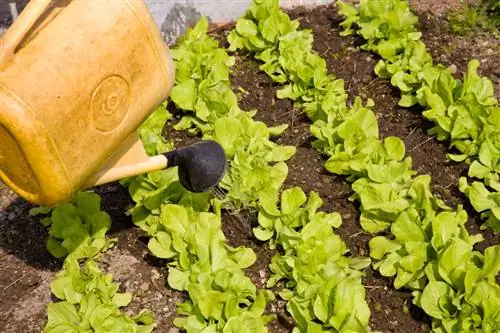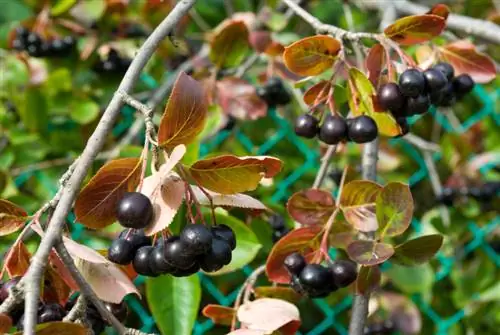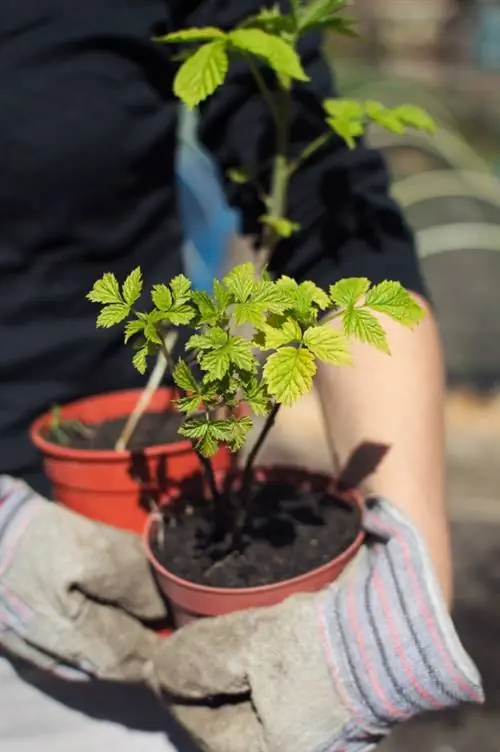- Author admin [email protected].
- Public 2023-12-16 16:46.
- Last modified 2025-01-23 11:20.
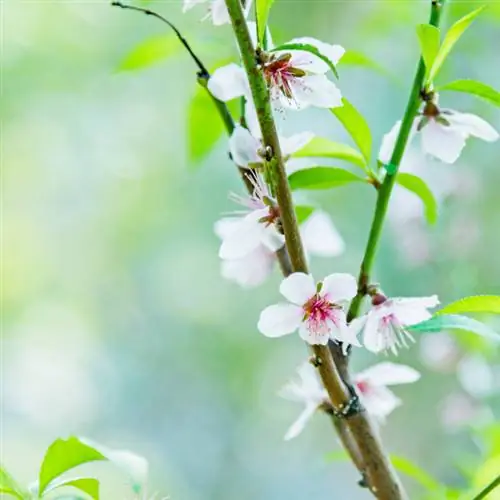
Young trees thank you after a short time with a rich harvest. We explain the most important steps for planting plums correctly. Find out what things to consider.
How do you plant a plum tree correctly?
To plant a plum tree, choose a sunny, nutrient-rich and constantly moist location without waterlogging. Shorten the roots, plant the tree in a sufficiently large hole and pay attention to the correct position of the grafting point.
Choose the right location:
- sunny
- nutrient-rich (annual compost addition
- constantly moist
- Attention: no waterlogging
Planting
Before planting, shorten the roots a bit. Abandoned copies will be removed. This also applies to young shoots. The last bud on the shoot looks outwards. This supports sustainable growth.
For the planting hole, calculate the size of the root ball plus an additional 15 centimeters on each side. The roots disappear completely into the hole and can be covered with sufficient soil. Tread them lightly. A support pole provides additional support in windy regions.
Note:
Make sure that the grafting point is at least 15 centimeters above the ground.
Grow your own plums
You can grow your own fruit trees from the core of fresh plums. Plum trees are cold germinators. Use the winter months to grow small seedlings. As soon as the garden soil is frost-free, the plant will thrive in its future location. Old plum varieties can also be propagated via offshoots. This only applies to ungrafted trees.
Planting time
During the vegetation break, you can plant the plum tree between autumn and early spring. A frost-free ground is a prerequisite. The specialist market also offers plums in containers. You can plant these all year round.
Flowering and harvest
Between April and May, the plum tree delights with its wonderful blossoms. Depending on the variety, the harvest takes place between July and September. Early plums are suitable for drying, freezing or pickling. Overripe or late fruits form an excellent basis for puree.
Use of substrate
Adding compost supports the establishment of young roots. Additional fertilization during the first few years is not necessary.
Space requirement
Basically, fruit trees need a lot of space for sustainable growth. Before buying, find out about the characteristics of the plum variety you choose.
Rule of thumb:
The roots and the tree crown are the same size.
Tips & Tricks
When buying a young tree, make sure it has a straight trunk. Strong roots reflect the excellent he alth of the plum.

